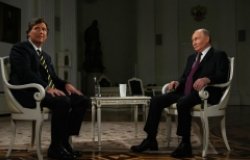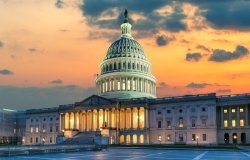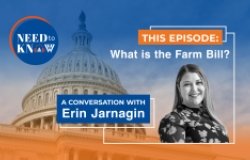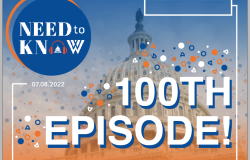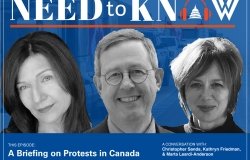President’s ‘Recess’ Picks Set Dangerous Path
On Jan. 4, President Barack Obama shouted “recess,” ran to the empty playground and jumped on the teeter-totter. Not surprisingly, it instantly tilted his way at the presidential end of the board.
He proceeded to exercise his recess appointments power by filling four executive branch vacancies — three at the National Labor Relations Board and one at the head of the newly created Consumer Financial Protection Bureau. (The Constitution permits the president to unilaterally make temporary appointments to fill vacancies without confirmation by the Senate if it is in recess.)
A fusillade of protests erupted on both sides of the Capitol because Congress had not rung the constitutional recess bell. The House had refused to send the Senate the traditional concurrent resolution to adjourn the first session for the explicit purpose of preventing the president from making recess appointments. That refusal forced both chambers to hold pro forma sessions every three days because the Constitution forbids either chamber from adjourning for more than three days without consent of the other. That was thought to be a sufficient blocking action because, traditionally, presidents have made appointments only during recesses of 10 days or more.
The mandatory pro forma sessions carried over to the second session, which convened Jan. 3, as required by the Constitution. The following day, the president announced his recess appointments, even though the House and Senate would reconvene for another pro forma session just three days later.
The same day the four recess appointments were announced, the president traveled to Shaker Heights, Ohio, with his recess-appointed CFPB director, Richard Cordray, in tow.
The president told the crowd that Cordray’s nomination had been blocked since July by Senate Republicans who “don’t agree with the law that set up a consumer watchdog in the first place.” The president went on to say the blockage was preventing the new agency from doing its job of protecting consumers. “I refuse to take no for an answer,” he asserted. “When Congress refuses to act ... I have an obligation as president to do what I can without them.”
White House Communications Director Dan Pfeiffer blogged that same day that the president had exercised his authority to make temporary recess appointments — “a power all recent presidents have exercised” (though none had done so during a three-day pro forma session break). He went on to characterize the pro forma sessions as a “gimmick” because no Senate business is conducted. Such gimmicks “do not override the president’s constitutional authority to make appointments to keep the government running,” Pfeiffer said. He noted that constitutional experts, including lawyers for President George W. Bush, agreed that “the Senate cannot use sham ‘pro forma’ sessions to prevent the president from exercising a constitutional power.”
The Office of Legal Counsel at the Justice Department weighed in with its written opinion two days later, citing a February 2004 OLC memo to Bush’s White House counsel, Alberto Gonzales, affirming that “a recess during a session of the Senate, at least if it is sufficient length, can be a ‘Recess’ within the meaning of the Recess appointments Clause.”
However, as mentioned earlier, “sufficient length” has previously been honored as meaning a recess of 10 days or more.
The Obama-OLC opinion cleverly skirted this problem by claiming that the Senate would effectively be in a 20-day intrasession recess from Jan. 3 until Jan. 23, when it was scheduled to resume legislative business. That’s because convening interim pro forma sessions “does not have the legal effect of interrupting an intra-session recess.” Put another way, the five pro forma sessions the Senate held between Jan. 3 and 23 don’t count as sessions because the president says they don’t (the unitary executive lives). That means the five short breaks in between were really just one long recess.
Several things should be noted: 1) Senate Majority Leader Harry Reid (D-Nev.) first instituted the pro forma blocking device in 2007-08 to prevent President George W. Bush from making recess appointments, 2) Reid reportedly did so at the instigation of that staunch defender of the Constitution, Sen. Robert Byrd
(D-W.Va.), 3) Bush did not defy the Senate action despite the OLC opinion that he could, 4) this Congress introduced and passed (by voice vote), and the president signed into law, the short-term payroll tax holiday bill, all on the pro forma session day of Dec. 23, 2011, giving lie to the president’s claim that no legislative business is conducted on such days, and 5) the courts have historically upheld Congress’ right to interpret its own rules on such matters.
For any president to pick a fight with Congress over such a delicate issue in an election year may be a clever partisan ploy, but it is both constitutionally dangerous and politically damaging to inter-branch relations and the confirmation process generally.
About the Author

Donald Wolfensberger
Former Director, the Congress Project, Wilson Center; Former Staff Director, House Rules Committee

